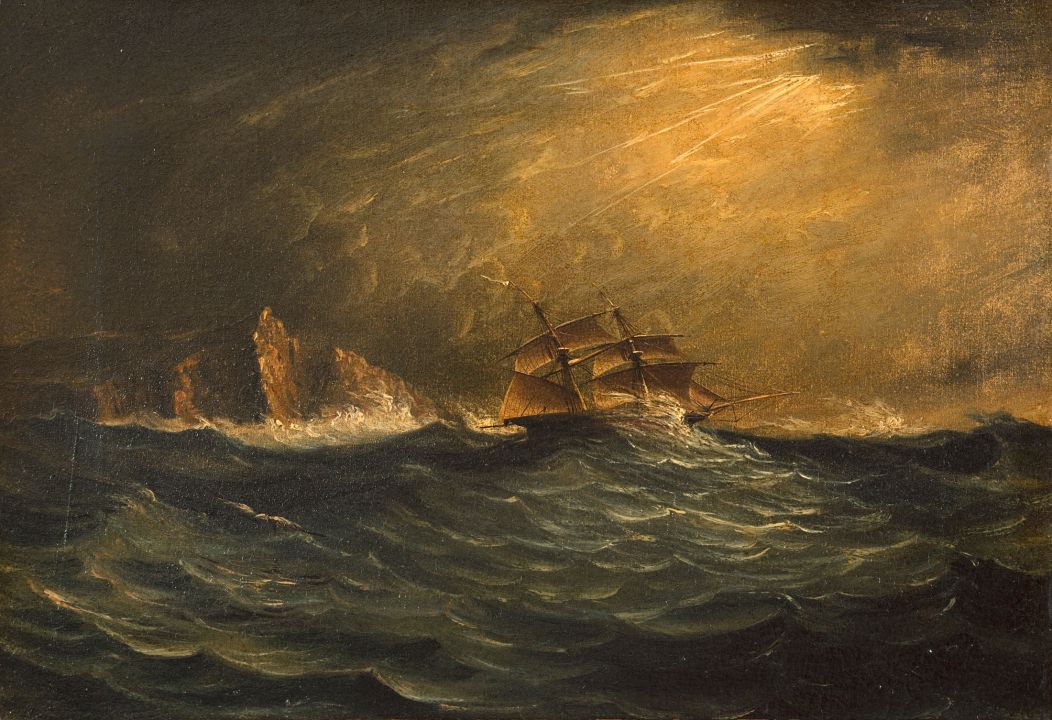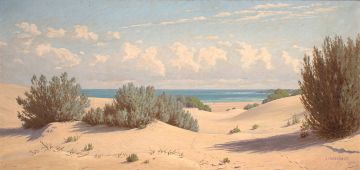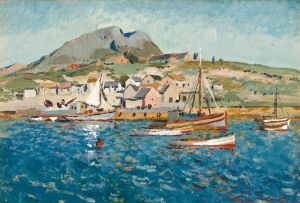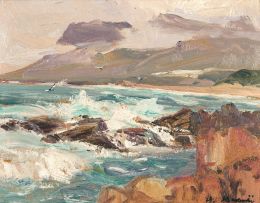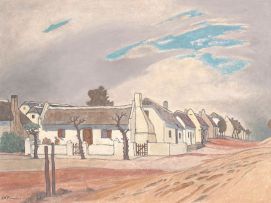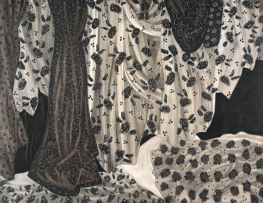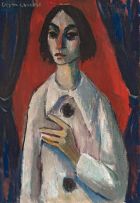Important South African and International Art, Decorative Arts & Jewellery
Live Auction, 16 October 2017
Evening Sale
Incl. Buyer's Premium & VAT
About this Item
indistinctly dated; signed, dated 'March 4 1849', inscribed with the title and 'Graham's Town' on the reverse
Notes
This image of a schooner being battered by the South Easter somewhere off the Cape was executed in Grahamstown and dated March 4, 1849, approximately a year after Thomas Baines' arrival in the Eastern Cape.
Baines arrived in South Africa via Cape Town in 1842 on board the schooner 'Olivia', which features as the subject in many of his maritime paintings. A similar example of the Olivia in rough waters off Table Bay is held in the William Fehr collection at the Castle of Good Hope in Cape Town.
After a period of five years in Cape Town and working as an apprentice to an ornamental coach painter, Baines set out on his voyages to the interior where he would carve his place in history as one of the famous colonial explorers of the era.
Born in 1820 in King's Lynn, Norfolk, Baines came from a family of mariners and travellers; his father, John, was a master mariner who had served a term in the Cape station, and his maternal uncle had emigrated to Durban. King's Lynn was then a busy whaling port, and the waterfront thronged with men who had fought under Nelson and Collingwood and others who, like their fellow townsman George Vancouver, had sailed with Cook.¹
When Baines first set out from King Lynn in Norfolk in 1842, at the age of 22, his diaries do not suggest that had any pronounced interest in exploration. However, ever present themes in Baines' life and work are his aspirations and disappointments as an 'explorer'.²
He was born in an era in which the cult of the explorer was at its zenith. As has been observed in relation to Livingstone, the "figure of the explorer seemed to draw together the most cherished national ideals in an age of supreme confidence about the virtues of of the British: a fearless sense of adventure, selfless dedication, heroic valour and technological mastery".³
1 Helen Luckett. (1975) 'Thomas Baines: 1820-1875', The Geographic Journal, vol. 141, No. 2, July.
2 Michael Stevenson. (1999) Thomas Baines: An Artist in the Service of Science in Southern Africa. Catalogue accompanying the exhibition Thomas Baines: An Artist in the Service of Science in Southern Africa, held at Christie's London, 1-17 September.
3 Felix Driver. (1996) 'David Livingstone and the Culture of Exploration in mid-Victorian Britain', in David Livingstone and the Victorian encounter with Africa, exhibition catalogue 8, National Portrait Gallery, London, page 112.
Literature
cf. William Fehr, 1973, (4th Edition), Treasures at the Castle of Good Hope. Published by the Board of Trustees of the William Fehr Collection, Cape Town. A similar painting of the Olivia is illustrated on page 132.
cf. RF Kennedy, 1966. Catalogue of Pictures in the Africana Museum. Johannesburg, Africana Museum. Page 53 notes "Baines spent the fi rst seven months of 1849 in Grahamstown painting from his sketches and visiting places in the vicinity". Preparatory sketches of the Olivia are illustrated on page 29 and page 30 and titled on the reverse: "Sketches of a voyage to the Cape of Good Hope by T Baines in the Olivia, W Roome Commander".
